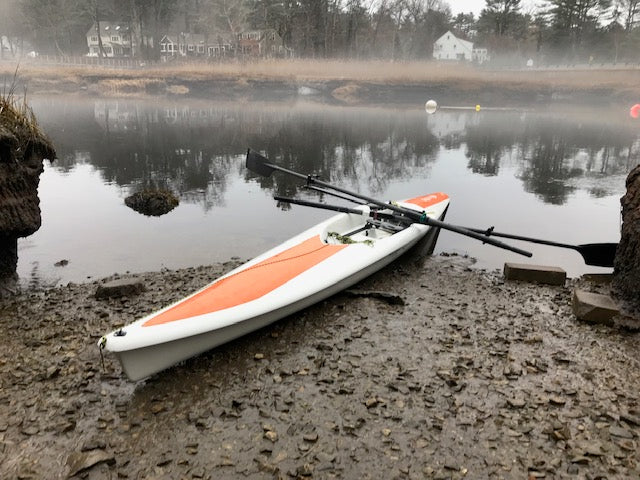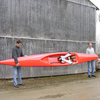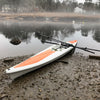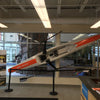Chasing Ice

Chasing Ice
In the past decade I have become a migratory rower, with three distinct seasons. Late April/early May pushes me up the North River, ten miles or so upstream, because that’s where the herring go. And where the herring go, the striped bass follow. There are few thrills like that of catching a striper north of 30’ in a few feet of tea-dark water. Once those fish move out, I set up shop in Duxbury Bay through early November, chasing fish in that magnificent seascape of fickle currents and shifting sandbars.
Going With the Flow
Then winter comes and the purpose of my rowing changes. Now it’s about putting in the miles upriver where it’s calm and relatively safe. And on the perfect days, it’s about chasing ice.
The recipe for chasing ice is simple: you need a cold snap of about a week, preferably down into the teens, to get the desired ice formation. Then you need a warm spell to break it all up and start sending ice down the river. A perfect day involves bluebird skies and ice floes longer than my Echo. The best is when the ice is stacked up in the downstream corners of the river, with open fairways on upstream sheltered corners, and thinly populated straightaways - transition points where one has to cross through the loose ice drifting down the middle of the river to get to the next stretch of open water. It adds an entirely new strategic element to the game.
Sometimes, that means rowing up to a motionless floe in midstream, nesting the bow gently against it, and pulling with slow but deliberate and powerful strokes. That generally pushes the ice enough to create an opening for the Echo. Now one problem remains: there’s no water for the oars, because there’s ice on each side of the boat. The trick to that is relatively simple. Finding a bump or an irregularity in the ice on each side of the boat, and levering against those until the boat moves through to open water generally gets one through. It’s a slow process and one has to strategically pick the transition points. If one is too clogged, there’s usually another. Rivers and ice are dynamic.
At some point, far enough upstream, the game ends, and the river becomes too choked with ice to allow forward progress. It’s worth hanging there and listening to the sound of the current and the grinding ice. At that moment, you may be within a half mile of somebody’s house, but you are far from home.
Today’s Tease
So this morning in the light rain and fog I thought I would give it a shot, although it hasn’t been cold enough yet to build up the good stuff. The river was calm with a light outgoing tide and there were occasional small pieces of ice floating by, so I thought upriver might be OK.
I launched at Union Street in Marshfield, putting about ¾ pressure on the oars and moved upstream for about three miles, heartened by increasing amounts of ice on the banks and occasional small 2” thick three-footers floating by. I never found the mother lode though, and eventually turned around, working on some 20-stroke sprints as well as some longer pieces under less than full pressure. At one point, felt and heard the satisfying thud of the hull slamming into a small chunk two foot chunk of 2” ice. The Echo eats those little ones for lunch, and the two new halves slid by in my wake as I headed back downstream to my truck.
Today was a good tease, but not quite what I was looking for. Nonetheless, it’s still early in the game – it’s not even winter yet – so plenty of time left in the game.
ONE NOTE of CAUTION: Of course there is some danger involved in being on the water in winter. Always bring a life jacket, a dry bag with extra clothes, hand warmers and a cell phone and let somebody know where you are going and the stupid trip you are about to embark upon ;-)
Peter Kelly-Detwiler is a conservationist, amateur punster and avid rower. He has been exploring the waters between Scituate and Chatham, Massachusetts since he was a child, mostly in search of striped bass. When he is not exploring in his Echo Sport, Peter runs an energy consulting business, writes a blog for Forbes.com and still rows in the annual Head of the Charles Regatta with his “boatmates” from Williams College.





